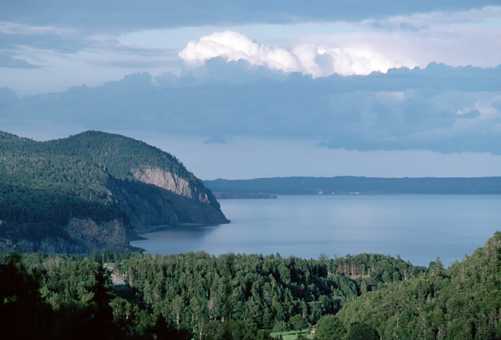Four times a day, the fury of the planet's highest tides surges in and out of the Bay of Fundy
The gigantic ebb and flow of 100 billion tonnes of water between New Brunswick and Nova Scotia is recognized as a natural wonder — and now, more than ever, as a massive power plant.
Canada has enough tidal energy to power most of the country’s homes and the lion’s share of it lies in this bay, according to Natural Resources Canada.
As early as next week, Ottawa and the government of Nova Scotia will announce whether they’ll okay more development in the area — a decision that will draw attention to the potential benefits and risks of this new source.
Only one-2,000th of that potential has been tapped so far. For 25 years, Nova Scotia has been capturing enough of the clean, renewable energy from Fundy tides to power 6,000 homes.
The 20-megawatt, tidal-power turbine on the river near Annapolis Royal is one of only two spinning in Canadian waters — and one of only a handful in the world. The country holds more than 40 gigawatts of tidal power, although much of it lies currently beyond reach in the Arctic, far from any electrical grid.
The number of generating stations is expected to rise, especially as countries search for ways to cut back greenhouse-gas emissions. Three companies are awaiting environmental approval from Ottawa and Nova Scotia to plunk their turbines into Fundy’s inner Minas Channel.
If approved, the first test unit could be in the water as early as this fall. This project could lead to a larger-scale project in the Bay of Fundy, one of the most promising sites for tidal power on the planet.
Some marine biologists warn the potential impacts of this renewable resource could devastate another resource — the area fishery.
Mike Dadswell, a scientist who’s been studying the Annapolis Royal turbine since the 1980s, said the spinning blades of the underwater powerhouse is a killing — and maiming — machine for marine life. Dadswell said the proposal calls for the turbines, which have blades as long as 17 metres, to be set up along the upper bay’s main migration route. He said the equipment would essentially be anchored out in the open ocean, making them even more dangerous marine life.
Proponents of tidal power say ocean currents produce much more energy than wind, and with charts that predict the tides decades into the future, there is no uncertainty.
Share your industry press now!
Are you a PR agency or sustainability-focused organization? Join the World of Renewables network FREE today and gain exclusive access to our platform to promote your business, share the latest industry news, and connect with a global audience of 700,000+ renewable energy professionals.
Register Now to start posting your updates and showcase your expertise to a highly engaged, environmentally-conscious community.
Find out more about our Content Partnership Programs.*2024 AWARD WINNER* Websites & Mobile Sites, Webby Winner, Peoples Voice 2024












